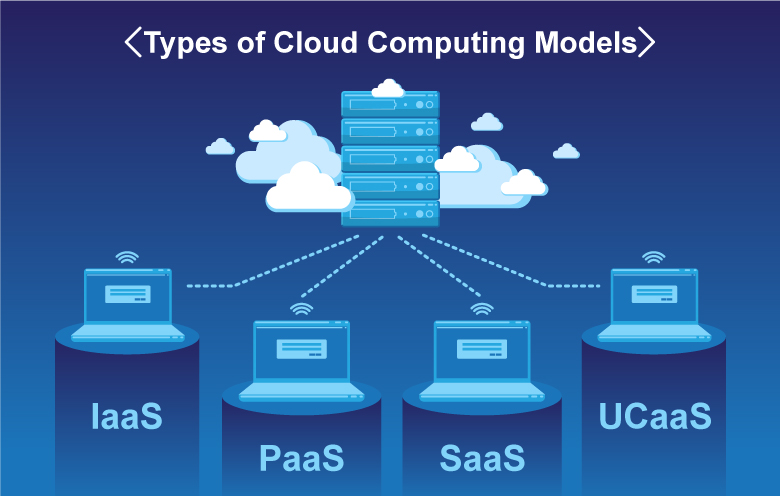Universal Cloud Service: Reputable and Effective Solutions for Your Company
Universal Cloud Service: Reputable and Effective Solutions for Your Company
Blog Article
Achieve Seamless Scalability With Cloud Services
In the ever-evolving landscape of cloud services, attaining smooth scalability stands as a cornerstone for contemporary services looking for to stay adaptable and affordable. The quest for seamless scalability with cloud services introduces a world of possibilities for those eager to welcome the transformative power of dynamic source administration.
Benefits of Cloud Scalability
Cloud scalability provides companies the flexibility to dynamically readjust resources based upon need, making sure optimum performance and expense performance. One key benefit is the capability to range resources up or down quickly in response to rising and fall workloads. This agility makes it possible for services to fulfill transforming customer requirements without over-provisioning resources, ultimately causing set you back savings. Scalability additionally boosts efficiency by guaranteeing that systems can deal with increased web traffic or work without experiencing downtime or stagnations. By efficiently alloting sources, companies can keep high levels of performance during peak times without unnecessary expenses during quieter durations. In addition, cloud scalability advertises advancement and experimentation by allowing companies to quickly test new concepts and scale them as needed. This adaptability encourages a society of constant renovation and adaptation, allowing organizations to remain competitive in a rapidly advancing market landscape. Eventually, the benefits of cloud scalability prolong past expense savings to incorporate improved efficiency, agility, and development.
Key Features for Scaling
Efficient scaling in cloud solutions depends on essential functions that enable companies to readjust resources dynamically based on demand. One vital attribute for scaling is elasticity, permitting sources to scale up or down in action to rising and fall workloads. This ensures that companies can satisfy performance requirements without over-provisioning sources. Another key feature is scalability, enabling systems to handle boosted workload by including resources perfectly. This feature is crucial for fitting development without endangering performance. Furthermore, automation plays a vital function in scaling by automating the provisioning and de-provisioning of resources based on predefined policies. Automation decreases human treatment, enhances performance, and ensures fast feedback to altering needs. Monitoring and analytics devices are additionally essential for scaling, supplying insights into source use, performance metrics, and possible traffic jams. These tools allow organizations to make enlightened decisions and maximize resource allocation for effective scaling. In general, these vital functions jointly encourage organizations to achieve smooth scalability in cloud services.
Executing Auto-Scaling Methods
To efficiently maximize source allowance and adjust to differing work, companies must purposefully execute auto-scaling methods in their cloud solutions framework. Auto-scaling enables systems to instantly change the number of calculate resources based on real-time need. There are numerous auto-scaling methods that organizations can utilize, such as anticipating scaling, which utilizes historical information to forecast future source demands, and reactive scaling, which reacts to present workload changes.

Ideal Practices for Scalability
For companies aiming to enhance their scalability in cloud services, carrying out finest practices is essential for optimum performance and source monitoring. One secret best technique is designing applications with a microservices style. This technique breaks down applications into smaller, independent services that can be released, updated, and scaled individually, permitting greater adaptability and scalability.
An additional essential method is using containerization innovation, such as Docker or Kubernetes. Containers enable the product packaging of applications and their dependencies into separated units, making it easier to scale elements individually and deploy them regularly across various atmospheres.
Additionally, carrying out automated implementation company website and infrastructure as code (IaC) can enhance scalability efforts (linkdaddy cloud services). Automation tools like Terraform or Ansible aid in provisioning and handling resources efficiently, lowering hand-operated errors and making it possible for rapid scalability
Moreover, keeping track of efficiency metrics, setting up signals, and performing routine capability preparation are essential methods to guarantee positive scalability monitoring. By sticking to these ideal methods, companies can accomplish seamless scalability in their cloud services while maximizing performance and source usage.
Surveillance Efficiency Metrics
When assessing the effectiveness of cloud solutions scalability, very closely checking efficiency metrics is important for making sure ideal functionality and resource allowance. By constantly tracking essential efficiency indicators (KPIs) such as reaction times, source, throughput, and latency utilization, companies can acquire useful insights right into the wellness and performance of their cloud facilities. Monitoring efficiency metrics enables for the very early discovery of prospective bottlenecks or concerns that might impact scalability, enabling aggressive actions to be taken to resolve them prior to they escalate.

Final Thought
Finally, accomplishing seamless scalability with cloud services is important for companies to enhance performance, enhance technology, and keep try this out high performance degrees throughout peak times. By leveraging the advantages of cloud scalability, executing auto-scaling techniques, utilizing crucial functions such as elasticity and automation, and adhering to finest techniques like application style and efficiency surveillance, businesses can effectively scale visit here their systems while making the most of source application and efficiency.
The mission for seamless scalability with cloud solutions unveils a globe of opportunities for those ready to embrace the transformative power of dynamic source administration.
Cloud scalability uses organizations the versatility to dynamically readjust resources based on need, making certain ideal efficiency and cost effectiveness. An additional essential attribute is scalability, allowing systems to take care of boosted workload by including resources flawlessly.For organizations aiming to boost their scalability in cloud services, applying best practices is essential for optimum performance and resource monitoring.When examining the effectiveness of cloud services scalability, carefully keeping track of performance metrics is vital for making certain optimal performance and resource allocation.
Report this page